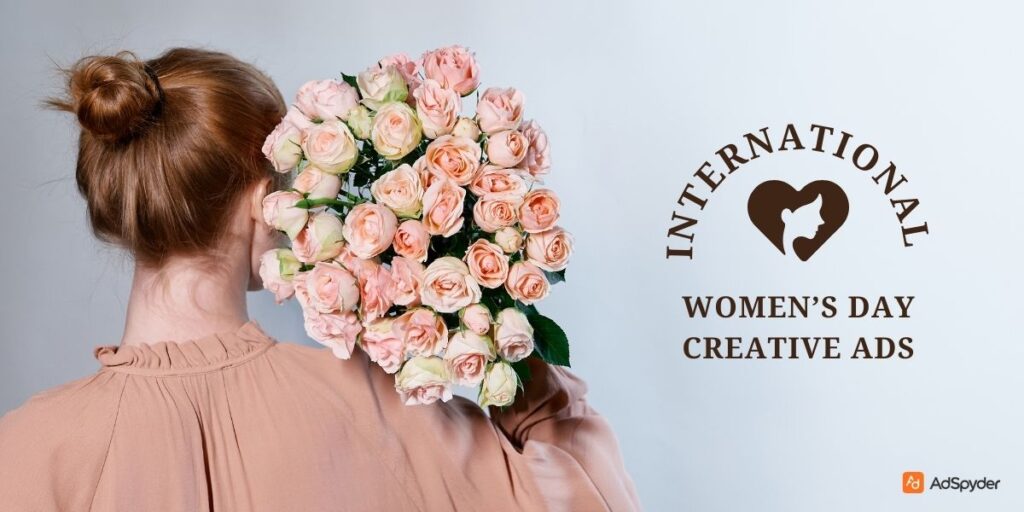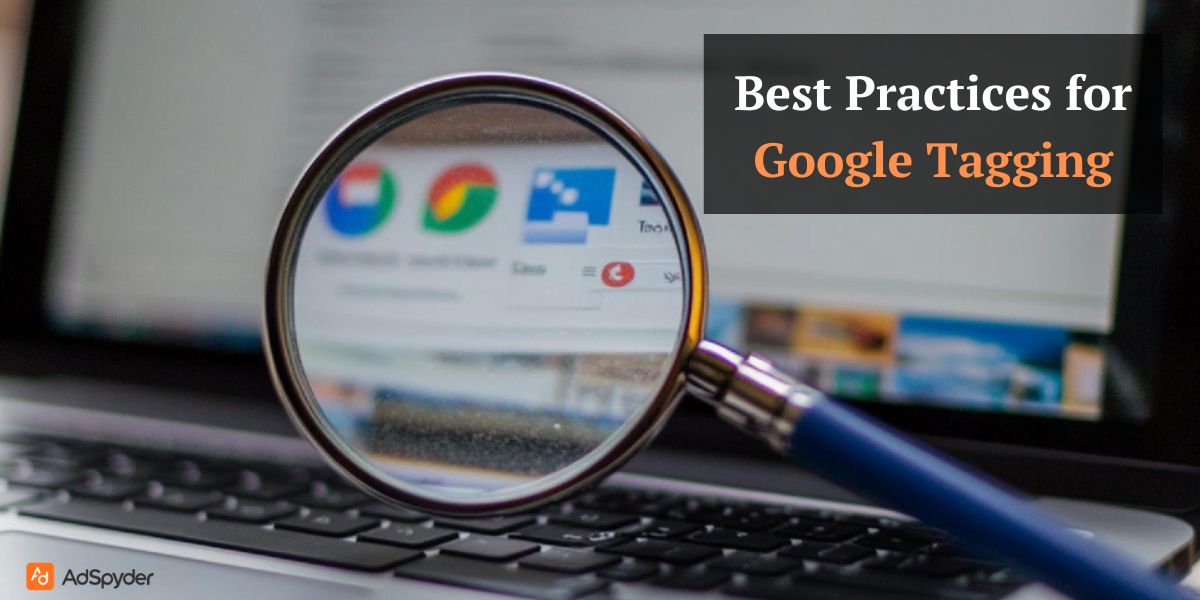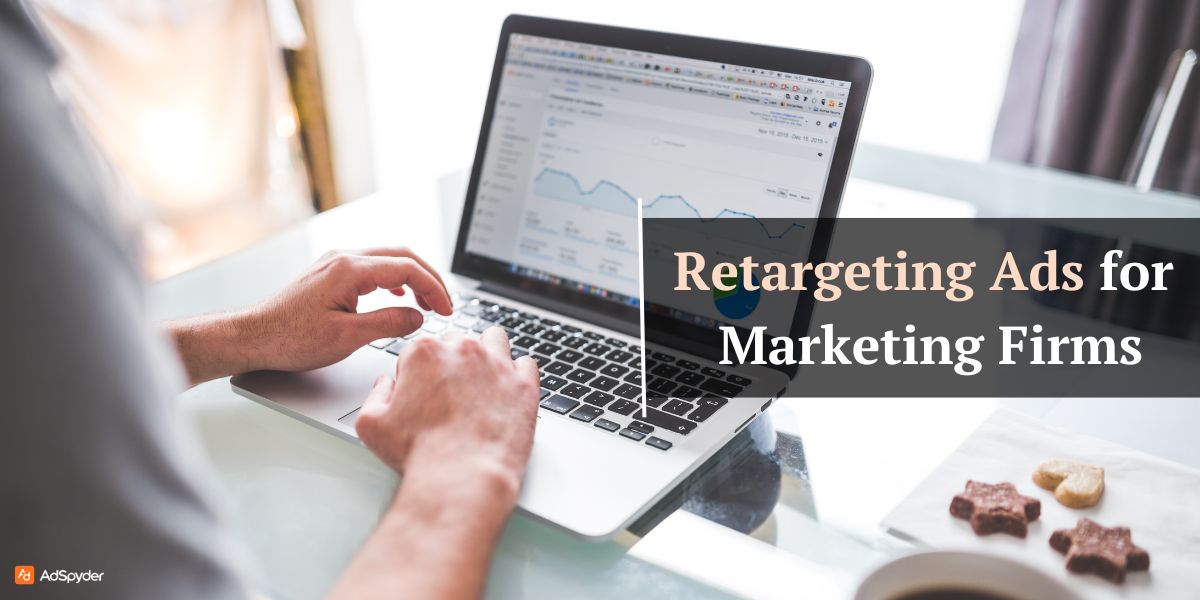Each year, March 8 is celebrated as International Women’s Day (IWD), a global holiday that celebrates women’s achievements, resilience, and contributions to society. It’s also a time to reflect on gender equality, challenge biases, and advocate for inclusivity. Brands across the world are made aware of this day and use creative advertising to heighten the importance of their respective messages and stimulate social change while also creating opportunities to connect meaningfully with their target audiences. Brands have evolved their International Women’s Day Creative Ads from simplistic greetings to those that tell powerful stories, have real-world consequences, and constitute social activism. Using either digital ads, TV spots, or social media campaigns, companies aim to educate consumers in an engaging and authentic way about female empowerment, inclusivity, and gender equity.
Ready to Elevate your Marketing Strategy?
Not all Women’s Day ads hit the mark. While some campaigns gain worldwide applause for their sincere commitment toward gender equality, others receive backlash for being feature-role marketing. What makes an IWD ad stand out? And how does a brand ensure its message is impactful and not opportunistic?
Let’s get into how brands celebrate women with powerful creative ads!
The Role of Creative Advertising on International Women’s Day
Creative advertising on International Women’s Day immensely contributes to raising awareness and challenging stereotypes while celebrating women’s achievements. Brands use innovative campaigns to target gender equality and women’s empowerment while inciting meaningful conversations.
Why Do Brands Participate in Women’s Day Campaigns?
Advertising on International Women’s Day is much more than a marketing opportunity; it is also a way for brands to:
- Increase awareness of issues related to gender equality.
- Demonstrate support for women’s empowerment and inclusivity.
- Engage the audience with inspiring storytelling.
- Increase brand equity by associating with a big global movement.
However, the effectiveness of an IWD ad campaign is all about authenticity. Today, consumers are quite alert when it comes to performative gestures, frequently calling out brands for resorting to superficial feminism, where the company seems to support women while failing to take real action within its internal organization.
Thus, as far as the long-term sustainability of brand reputation is concerned, companies preaching empowerment messages cannot afford to forget to implement equal pay and leadership opportunities for women within their own organizations.
Impact of Creative Advertising on Women’s Empowerment
Creative advertising has the power to develop attitudes toward women in society. Striking a balance to make the introduction of the advertisement effective is rewarding. These ads can do:
- Challenge Gender Stereotypes: Brands challenge traditional roles and reinforce positive change.
- Diversity and Representation: “Women, like men, come from different backgrounds, and that diversity becomes relatable in the ad world.”
- Emotional Connect: Storytelling can spur action and support for gender equality.
- Encourage Conversations: Aggressive messaging in ads allows for discussions around women.
Brands that choose to celebrate Women’s Day do not sell a product; they build an emotional connection with their audiences through creative advertising.
Check Out: Creating Interactive Ads on Instagram
International Women’s Day Creative Ads
International Women’s Day Creative Ads has become quite a relevant moment for brands to demonstrate their commitment to gender equality with their creative advertising campaigns. The most impactful ads go beyond just selling a product; they tell inspiring stories, challenge gender stereotypes, and allow for meaningful conversation.
Here are some of the top International Women’s Day campaigns that left their mark.
1. Nike – “Dream Crazier” (2019)
Key Message: Break down barriers and set new standards for what women in sports can accomplish.
Nike has long been at the forefront of windshield campaigns geared toward women, and the “Dream Crazier” is one of them. The video, narrated by tennis icon Serena Williams, demonstrates how women in sports have long been labelled “crazy” for employing passion, ambition, or muscle.
Why It Stood Out
- Showcases the real-life female athletes who gained recognition despite disagreement.
- Contest stereotypes regarding what women gaze at in sports.
- Stands out for its great, emotional story still speaking far beyond sports.
- Inspires women to own their ambition, dreams, and strength.
Marketing Takeaway: Brands that break the societal norm and in turn celebrate the strength of women get connected emotionally with their audience.
Must See: Best Practices for Garment Advertising
2. Dove – “Real Beauty” Campaigns
Key Message: Redefining standards of beauty and empowerment of self-confidence.
For a long time, Dove has campaigned for real beauty and self-love. Activating several thousand campaigns, Dove has spoken on International Women’s Day (IWD) about women’s natural beauty, diversity, and self-esteem issues arising from the standards of beauty.
One remarkable advertisement they showed for IWD consisted of women describing themselves versus how strangers described them- with the aim of noting that a woman appreciates beauty more than a woman considers it.
Why It Stood Out
- Promotes realistic beauty standards instead of idealized ones.
- Features authentic storytelling with real women.
- Encourages body positivity and self-acceptance.
- Sparks meaningful conversations around beauty standards.
Marketing Takeaway: Ads that focus on their authenticity rather than perfect, airbrushed models will garner a stronger emotional stance.
3. Google – “Women’s Day Doodles”
Key Message: Internationally paying tribute to women’s success through illustrations.
Each year Google dedicates the Doodle on International Women’s Day, featuring women pioneers, activists, and leaders from all over the world. Interactive doodles that highlight stories of iconic women aim to start conversations about these women’s impact on society.
Why It Stood Out
- Conveys messages of female contribution through art and storytelling.
- Features different women from different areas and cultures.
- Educates audiences about unsung heroines in history.
- Engages millions of people globally, providing them with an interactive experience.
Marketing Takeaway: Education and interactivity content helps brands connect with users on a deeper level and creates a sense of significance.
4. McDonald’s – Upside-Down Logo Campaign (2018)
Key Message: Turning the tables in favor of female empowerment.
The most striking headline made on International Women’s Day in 2018 was the flip of the golden arches (M) into a W, by which McDonald’s celebrated Women’s Day. The campaign rolled out on social media, digital platforms, and even in-store, and was a bold statement in support of women.
Why It Stood Out
- Quite simple yet very meaningful.
- Reinforced brand commitment to gender equality.
- Created a huge engagement and conversations on social media.
Criticism: Some questioned whether this deserved a real appreciation or was another grand hand-me-down in just name but symbolically geared towards good.
Marketing Takeaway: Brands must supplement symbolic gestures with actual action, be it with strong support for female employees, pay equity, or funding of women’s initiatives.
5. Johnnie Walker – “Jane Walker” (2018)
Key Message: Breaking stereotypes in a male-dominated industry.
In honour of International Women’s Day, Johnnie Walker, one of the most well-known whisky houses in the world, announced that they would be introducing “Jane Walker”—the female version of the classic Johnnie Walker brand. The campaign focused on empowering women and giving them recognition for their place in history, especially in male-dominated industries.
Why It Stood Out
- It was a bold move in a male-oriented industry.
- Addressed the representation of women in marketing head-on.
- Donated some proportion of the profits to women’s charities.
Marketing Takeaway: Brands rethink gender representation within their products, not just within their ads.
Related: Social Media Ads for E-Learning
6. Spotify – “Women’s Voices” Campaign

Key Message: Amplifying female artists and storytellers.
In observance of International Women’s Day, Spotify launched its worldwide campaign aimed at recognizing female artists, podcasters, and storytellers. It created specially curated playlists, exclusive podcasts, and personalized recommendations to commemorate women’s contributions to music and entertainment.
Why It Stood Out
- Visibility for women in the industry receives direct support.
- Has a long-term impact instead of ending in just a single day.
- Encouragement is given to the audience to interact and find out for themselves female voices.
Marketing Takeaway: Platforms that amplify women’s voices really empower them by providing the needed recognition.
Lessons from the Best Women’s Day Ad Campaigns
We have found out what determines a great International Women’s Day ad from the above campaigns; thus, summarizing, we think the main points are:
- Authenticity is key – Brands must go beyond symbolic gestures and genuinely support gender equality.
- Representation matters – Ads should present real women from an array of backgrounds.
- Emotional storytelling works – These are the stories that resonate with most people.
- Action speaks louder than words – There has to be a tangible commitment to support women throughout the campaign.
Strategies to Make Women’s Day Ads Resonate with Audiences
Coming up with a compelling International Women’s Day (IWD) ad is not merely throwing in a mention of the occasion. To ensure that the audience cares, campaigns must be crafted by the brands to ensure authenticity, emotional efficacy, and social relevance. Today, consumers value brands that take a stand on issues over those that regard it merely as an occasion for marketing.
This being said this is how brands can create meaningful Women’s Day ads that remain in our hearts.
1. Emphasize Authenticity Over Tokenism
March 8 is an occasion for brands to join in the clamor of International Women’s Day, even though the brand does not stand for gender equality. Audiences can easily spot performed marketing when brands put out a Women’s Day message without real backing action.
What Works:
- Showcase the actual company’s initiatives that support women (equal pay policies, leadership programs, etc.).
- Feature real women with real stories instead of actors or influencers reading a script.
- Make sure your messaging aligns with your brand values throughout the year, not just on March 8.
What to Avoid:
- Do not just post “Happy Women’s Day,” which has no real value or impact.
- Do not run an ad celebrating women while ignoring gender disparity within your own company.
- Do not throw buzzwords on empowerment; take no actionable steps to support women.
Example:
Instead of simply posting for Women’s Day, brands such as Patagonia continue their longstanding commitment to gender equality by supporting female environmental leaders and ensuring workplace inclusivity.
Related: Pepsi Ads: Iconic Campaigns, Strategies, and Lessons
2. Tell Emotionally Engaging and Relatable Stories
A storytelling approach makes the IWD ad translatable and memorable. The best Women’s Day advertisements do not just advertise a product or service but instead tell highly moving and poignant stories that inspire and connect with audiences on a deeper level.
What Works:
- Show real-life struggles and achievements: stories from women of all walks of life.
- Highlight the first-person accounts in which women recount their own tales.
- Emotional connections lead to feelings of inspiration, empowerment, or calls to action.
Example:
Nike’s “Dream Crazier” campaign pursued by Serena Williams reached audiences on an emotional level through the real stories of female athletes who broke barriers in male-centric sports.
3. Showcase Diverse Representation
It is not merely just about one block of women on Women’s Day, but all. A brand highlighting diverse voices and experiences becomes more impactful.
What Works:
- Have women of different races and backgrounds, body shapes and sizes, and abilities.
- Honour working women, stay-at-home moms, entrepreneurs, athletes, activists, and others.
- Be inclusive—portray women from the LGBTQ+ community, women with diverse abilities, and women from various cultural backgrounds.
What to Avoid:
- Objectifying portrayals (for example, displaying women only as caregivers, domestic aides, or such).
- Focus on famous celebrities instead of real women creating an impact.
Example:
Dove’s Real Beauty Campaign stands out for consistently challenging the unattainable beauty standards set by society, presenting genuine, diverse women in lieu of conventional models.
4. Use Social Media to Amplify Women’s Voices
Digital platforms are enabling Women’s Day campaigns to go beyond TV ads. The use of social media campaigns allows brands and audiences to interact, create community engagement, and convey their message more effectively.
What Works:
- Use a branded hashtag (for instance, empower her, she leads, break the bias) to ignite user-generated content.
- Using real stories and testimonials shared by customers, employees, and industry leaders.
- Collaborate with women influencers, activists, and thought leaders to amplify the message.
Example:
One great example can be seen in Spotify’s “Women’s Voices” campaign, which highlighted female artists and podcasters who had a chance to share their experiences championing equality within the music industry.
5. Align Your Message with Actionable Support for Women
A good Women’s Day campaign raises awareness about the issue but also takes action. Brands that actively pursue serious change gain credibility and long-term loyalty from their audience as a result.
What Works:
- Donate a fair percentage of sales to programs, organizations, or charities that work on behalf of women.
- Establish mentorship or scholarship programs to assist young women.
- Make a collaborative effort to support women in working environments.
Example:
Johnnie Walker’s Jane Walker campaign, moreover, wasn’t borne just out of a need to rework their whisky, but also made a determination on the financial front to make a donation to organizations that create platforms for the empowerment of their women.
6. Make Your Campaign Last Beyond Women’s Day
Women’s empowerment is a long-term day-after-day movement, and there is no point in celebrating it for a single day only. Such brands that are seen to integrate gender equality initiatives with their long-term strategy gain much credence and authenticity.
What Works:
- Embrace initiatives that continue beyond March 8, like ongoing mentorship programs for women.
- Continue to share women’s success stories and their achievements throughout the year.
- Make sure that within your company, gender equality is exhibited: consider leadership, hiring practices, and policy.
Example:
In recognition of Women’s Day, Google Cares not only designs in remembrance but actively encourages girls in regard to STEM education, empowering female entrepreneurs with substantial backing and resources throughout the year.
Conclusion
International Women’s Day Creative Ads is not merely a date on the calendar, but a movement towards gender equality, recognition, and empowerment. Companies that wish to make a genuine touch with audiences through International Women’s Day Creative Ads must integrate them more deeply than surface messaging; they should develop authentic, inclusive, and communication-driven campaigns. Such companies can create a rich connection with their audience by emphasizing authentic storytelling, diversity, and a sincere commitment to advancing women. Nevertheless, the celebration must go beyond just March 8 as powerful women. Companies incorporate gender equality in their long-term strategies in advertising only, but in community support, leadership opportunities, and workplace policies- to earn consumer trust and loyalty that last. If one does create a Women’s Day ad well, one takes a shot at inspiration, education, and real change, coming eclipse day, all effectively and meaningfully attempting to change the future.
FAQs for International Women’s Day Creative Ads
Why do brands create special International Women’s Day Creative Ads?
Brands think of International Women’s Day as an opportunity to show gender support, highlight women’s achievements, and engage the audience in a meaningful manner.
What makes a Women’s Day ad truly impactful?
A good ad transcends the pure message; it tells a good story, features diverse representation, and correlates with the real action that furthers women’s interests.
How can brands avoid being accused of performative marketing on Women’s Day?
Brands have to ensure that what they do within the company represents the message going out, support women beyond advertising, and engage in initiatives that drive real change, rather than do the Women’s Day UNICEF promotion.
Should Women’s Day campaigns only focus on famous women?
No, the best campaigns will highlight women from all walks of life, everyday heroes, professionals, activists, and those who make a change in their community.
How can brands leverage social media for Women’s Day marketing?
Brands could leverage interactive campaigns, user-generated content, meaningful discussions, or advocate influencers whose values align with theirs to attract engagement.
Is it necessary to run a Women’s Day campaign every year?
Though there is merit in running a campaign, what counts more is the long-term commitment to gender equality. Brands should support women every single day with advocacy programs and representation.
What are some common mistakes brands make in Women’s Day advertising?
Though there is merit in running a campaign, what counts more is the long-term commitment to gender equality. Brands should support women every single day with advocacy programs and representation.




